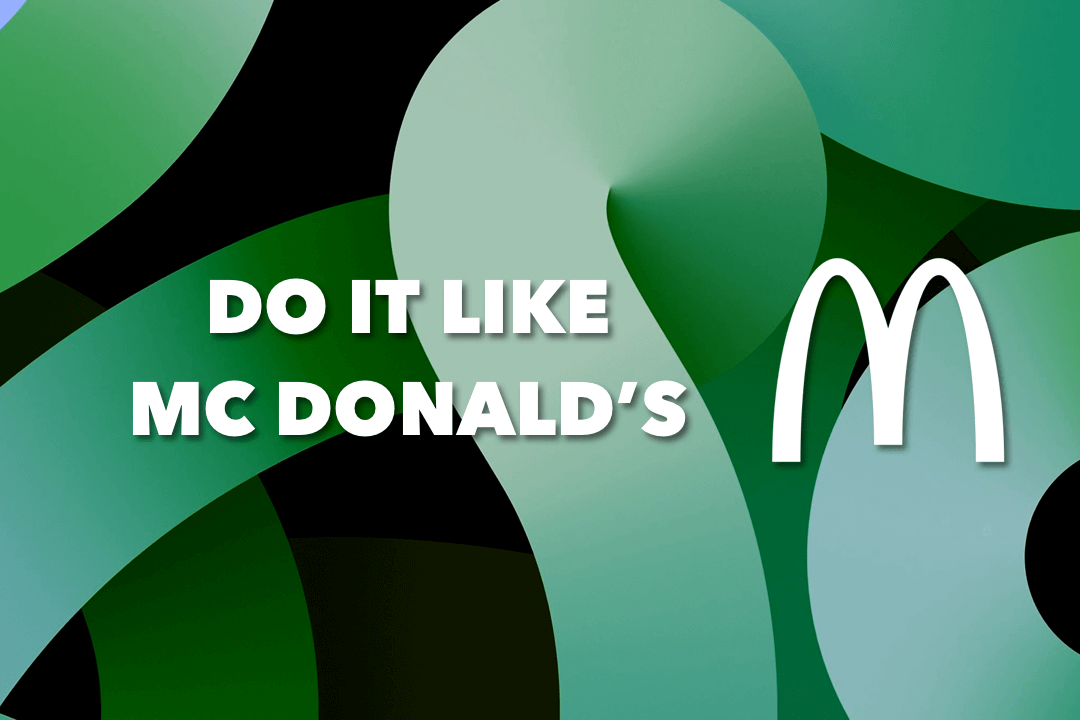
How McDonald's Mastered Cross-Selling to Add 15-40% in Revenue (& How You Can Too)

Love ‘em or hate ‘em there’s one thing you can’t deny about McDonald’s: they’ve perfected the art of the upsell.
Seriously, the phrase ‘would you like fries with that?’ is estimated to account for a whopping 15-40% of McDonald’s annual profits.
And here’s the thing: the way McDonald’s implements their cross-sells is just as applicable to your eCom store as it is to their restaurants.
So, in this post we’re going to break down the 6 core principles behind McDonald’s killer cross-selling strategy and reveal how you use them to power-up your profits.
Sounds good? Let’s jump in!
What is Cross-Selling Anyway?
In a nutshell, cross-selling is about offering complimentary products that enhance your customer’s original purchase.
In McDonald’s case, this is fries that go along with a burger. But there’s plenty other common cross-sells you’ll encounter such as:
- Insurance cover for a new laptop
- A pair of socks for new shoes
- A sturdy lock for a new bike
- That ‘what others bought’ on Amazon and more
Cross-selling is an awesome tactic for eCommerce merchants because you can use it to:
- Boost your average order value
- Increase your profit margins
- Enhance your customer’s experience and boost retention
- Introduce customers to new products
- Offload slow-moving stock
Now, a lot of folks often use the phrases cross-selling and upselling interchangeably. Although they offer similar benefits, there is a distinction between them.
So, before we get to the good stuff, let’s clear up any differences now.

Cross-Selling vs Upselling - What’s the Difference?
Okay let’s stick with McDonald’s as an example here.
Cross-selling is about offering a different but complementary product to your customer. So, fries compliment a burger.
Upselling on the other hand is about offering a more expensive version of the same product. So, ‘Would you like to go super-size for $1.49?’ is an example of an upsell.
Both upselling and cross-selling should have a place in your conversion strategy. However, for the purpose of this post, we’re going to zero in on cross-selling as it’s easier to implement on your store.
6 Cross Selling Best Practices From McDonald’s
Ok, with a handle on what cross-selling is, let’s use McDonald’s as an example of how to construct the perfect cross-sell in your store.
1. Identify Your ‘Fries’
The first thing McDonald’s can teach us is that you need to select your cross-sell products wisely.
Awesome cross-sells no-brainers for customers because they make their initial choice more appealing.
Think about it: the crunch and saltiness of crispy fries enhances the experience of eating a burger, right? When was the last time you said ‘no’ to the McDonald’s employee?
In a similar vein, you need to choose cross-sell products that aren’t merely related, but that actually level-up your initial offering.
For example, check out how male grooming brand Harry’s suggests several products that improve the experience of using their razors.
Face lotion, face wash and spare blades are highly likely to give customers a better overall experience with their razors.
So when building your cross-sell offers always ask ‘will these products genuinely make for a more enjoyable customer experience?’
If the answer is yes, you’re right on track to sky-high conversion rates.
2. Price Your ‘Fries’ Appropriately
The next thing to consider is your pricing. See, the great thing about McDonald’s fries is that they’re inexpensive relative to the burgers.
This low-price approach to cross-selling reduces the risk and mental energy needed to accept the offer.
When designing cross-sells for your store, choose a complimentary item that’s 50% or less of the price of your main product (lower percentages will usually boost conversion rates).
For example, check out how dental care brand Quip uses a lower-priced cart-page cross-sell here:
The refresh bag Quip offers is only 40% of the price of my cart. Plus, they’ve also added a short product description to nudge me closer to adding one to my order.
You may have to experiment a little bit with the pricing and product offered, but over time you’ll find the sweet spot that keeps your revenue and conversions high.
Remember, the goal is to make it an absolute no-brainer for your customers to say yes to your offer.
3. Resist Offering Nuggets Too
Imagine the teller in McDonald’s asked ‘would you like a happy meal, a milkshake, nuggets, a McFlurry, a baked apple pie, or fries with that?’
Chances are you'd be pretty confused, go the safe route and just stick with your original order, right?
See, as Barry Schwartz points out in his book The paradox of Choice, when we’re presented with an increasing number of choices, the opportunity cost of each choice starts to cancel out the benefits of the others.
Making a decision between fries and no-fries is easy. But with heaps of options on the table, it becomes more difficult to arrive at the best choice.
If you’ve ever been to Chipotle (which is part-owned by McDonald’s), you’ve seen a similar idea in action. They reduce decision fatigue by only asking about two options at a time when building a meal - ‘Bowl or Burrito? White rice, or brown rice? Black beans or pinto beans?’
So, keep things simple by offering only essential complimentary cross-sells. While a little choice is ok, lots of choice will likely harm your conversion rates.
For example, here bidet brand Tushy leverages a cart-drawer cross-sell to offer users a toilet paper subscription.
Tushy has lots of products on their store that they could offer here, but they choose to limit it to just one.
So, take a leaf out of their book and offer no more than three to four options when designing your cross-sells.
4. Nail Your Timing
When you go to McDonald’s, the cashier will never ask you “would you like some fries?’ until you’ve already committed to buying a burger.
This is because according to the psychological principle of consistency, you’re much more likely to say ‘yes’ to the fries when you’ve already said ‘yes’ to buying the burger.
On top of that, timing your cross-sells so that they happen after a customer has shown commitment to buying, reduces distractions pre-purchase.
And sure pop-ups and product page cross-sells can work well, but the mega conversion monster cross-sells are the ones that happen after a customer has decided to buy something.
For this reason cross-sells that happen:
- In the cart drawer
- On the cart page
- On the thank you page
Are generally the most effective way to cross-sell without detracting from your customer’s pre-purchase journey.
For example, here’s the type of thank you page cross-sell you create using our upselling app ReConvert for Shopify:
5. Don’t Be Pushy
A McDonald’s employee will never say ‘What! Are you sure you don’t want fries? They’re really tasty and only cost $1 extra. Seriously, what kind of cheapskate are you really?”
That’s because being pushy or salesy when it comes to cross-selling has the potential to harm customer relationships.
If you’re making it difficult for customers to opt out of your cross-sell offer them you’re doing it wrong. The last thing you want to do is leave a sour taste in your customer’s mouth or make them feel like you’re trying to squeeze them for every last nickel.
Remember, customer’s didn’t ask to be cross-sold to, so don’t force it upon them.
6. Test, Test, And Test Some More
While I’m unsure of how much testing McDonald’s did on their fries cross-sell over the years, you can bet they didn’t refine it by chance.
As with everything in the world of eCommerce marketing, repeatedly throwing stuff at the wall and seeing what sticks is often the best route to success.
Study your analytics to understand how your customer’s are responding to your cross-sell offers.
Test different products, timings, placements and discounts until you find the most profitable cross-sell opportunities for your store.
Go Forth & Apply These Cross-Selling Best Practices
As CPMs continue to rise, boosting your average order value is becoming more important than ever.
Cross-selling is one of the easiest ways to both improve your customer’s experience while also beefing up your bottom line.
No matter if you’re running a one product store or doing Shopify dropshipping, always implement cross-selling with the core principles in mind:
- Choose complimentary products that enhance your offering
- Use products that are 50% or less than the original product
- Avoid offering too many cross-sell options
- Time your offer when customers have already committed to making a purchase
- Don’t be pushy or overly salesy
- Leverage data to refine your cross-sells over time
And now over to you! How do you ask your customers ‘would you like fries with that?’. Do you have any killer cross-selling tips that we overlooked above? Share your insights in the comments below!
Author Bio: This guest post was written by Fintan Meagher and the team at ReConvert. ReConvert is the easiest way to add thank you page upsells, cross-sells, surveys, and more to your Shopify store.



